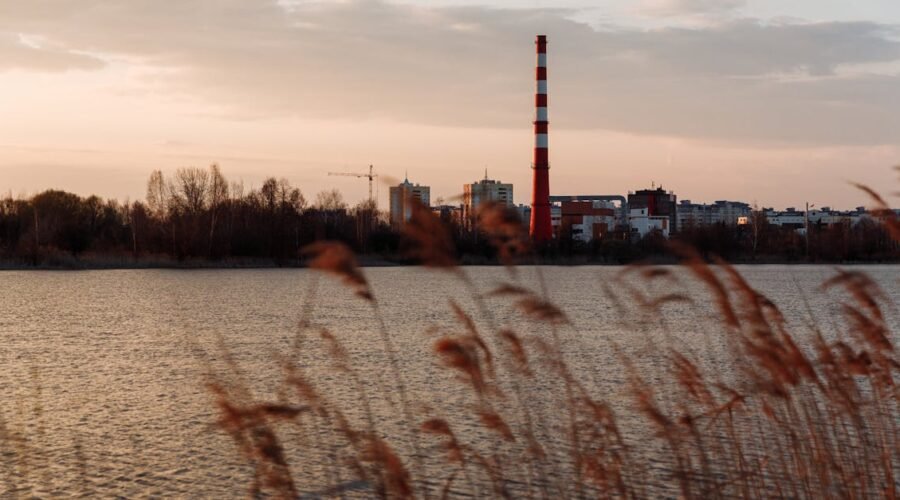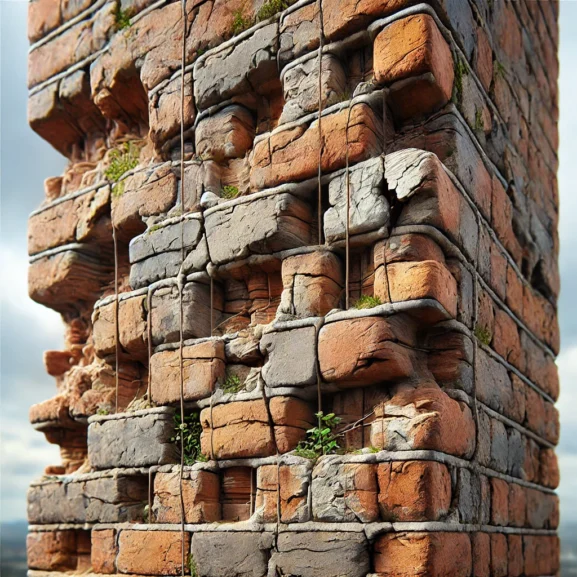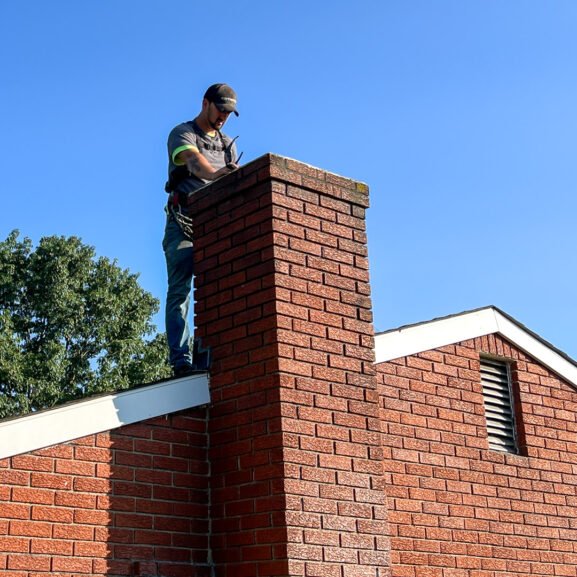Prevent Water Intrusion from Improper Chimney Cricket Installation: Tips and Solutions
Water intrusion is a homeowner’s nightmare, and it often sneaks in through unexpected places. One such culprit is the chimney cricket, a small but crucial structure designed to divert water away from the chimney. When improperly installed, it can lead to significant water damage inside our homes.
In this text, we’ll explore how a faulty chimney cricket installation can cause water intrusion and the telltale signs to watch for. We’ll also discuss the importance of proper installation and maintenance to safeguard our homes from potential damage. By understanding these key points, we can prevent costly repairs and ensure our homes remain dry and secure.
Chimney Crickets: A Comprehensive Guide for Homeowners
We’ve all heard the saying, “When it rains, it pours.” In the case of chimney crickets, improper installation can turn that saying into a literal (and soggy) reality. Chimney crickets play a crucial role in preventing water intrusion by diverting water away from chimneys.
Function and Importance
Chimney crickets act as a small roof behind the chimney that slopes to direct water toward its edges, aiding in water prevention. A well-installed cricket prevents roof leaks, improper drainage, and chimney water damage by channeling water away. These structures work closely with chimney flashing to enhance drainage systems. Without them, heavy rainfall can lead to water intrusion and cricket failure, resulting in costly chimney repairs.
It’s no laughing matter when water damage occurs, but the concept of a cricket guiding water does bring a grin. Nevertheless, proper installation remains crucial. Call a professional if anything seems off with your system. Reach out to professionals for consultation. Remember weather poses unique challenges, especially with roof design issues, so it’s essential for local homeowners to be vigilant.
Types of Chimney Crickets
There are a few types of chimney crickets, each designed to suit specific roof configurations.
- Wood Crickets: These are built from treated wood, and roofed over with the same material as the rest of the roof, offering seamless water management.
- Metal Crickets: These crickets use metal to provide durable protection and efficient roof waterproofing. They’re ideal for steep roofs needing extra sturdiness.
- Prefabricated Crickets: Ready-made options allow for easier installation and are tailored to fit varied chimney sizes.
Choosing the right type is essential for effective water management and prevention of chimney water damage. It’s wise to consult with experts; DIY isn’t recommended for these installs. For more insights, refer to the Chimney Safety Institute of America or the National Fire Protection Association.
Causes of Water Intrusion
Water intrusion through chimneys is no laughing matter. The main culprit? Our arch-nemesis: improper chimney cricket installation. Let’s jump into the havoc it can wreak!
Improper Installation Techniques
Poor craftsmanship leads to water intrusion. Faulty installation of chimney crickets leaves gaps and weak spots. Water then sneaks in, causing chimney water damage and roof leaks. If you’re experiencing mystery puddles, improper drainage might be the root of the problem. To dodge repair costs, ensure we use pros and not amateur plumbers. Weather can be tricky—professional installation can handle snow and rain without a hitch.
Use of Inferior Materials
Cricket failure can stem from using subpar materials. When materials can’t withstand rough conditions, they deteriorate quickly. Quality chimney flashing and compatible materials are essential in preventing water damage. High-grade choices last longer and ensure robust water management. To keep your rooftop dry, bid farewell to cheap fixes.
Neglect During Maintenance
Without love and care, even the best chimney crickets face doom. Skipping essential maintenance can lead to unexpected water intrusion. Regular chimney inspections help spot sneaky water entry points, ensuring effective drainage systems. Reach out to professionals for consultation.
Identifying Water Intrusion Issues
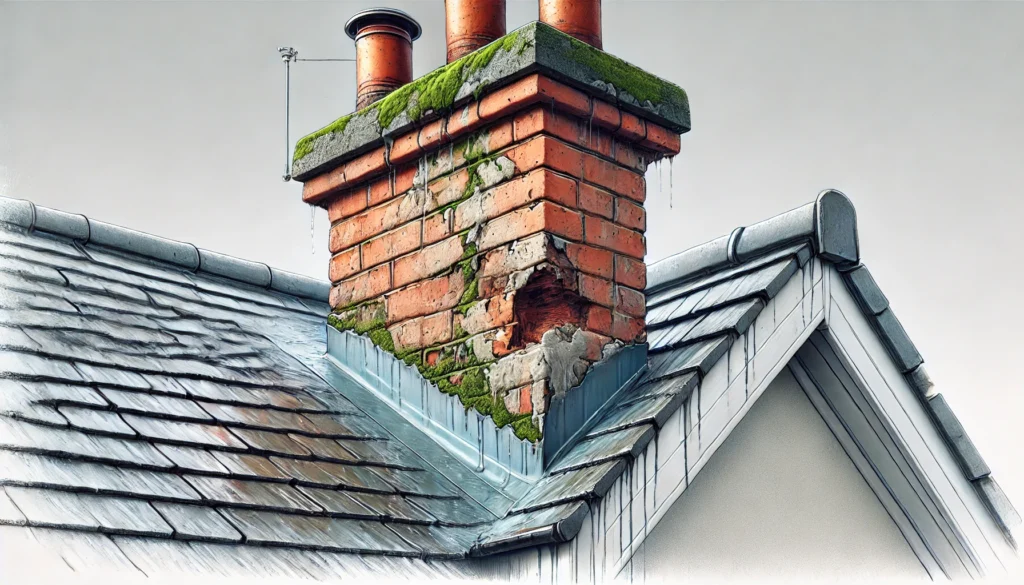
Spotting water intrusion early can save us headaches, heartaches, and a lot of soaked carpets. Here’s how we can look like chimney detectives and prevent chimney water damage from improper chimney cricket installation.
Visible Signs Around the Chimney
Look for cracked bricks or mortar. They hint that water may be sneaking in. Rust stains can also be a giveaway, like a roof leak culprit caught in the act. Check for moss or algae; they’re not just decorations, but are tell-tale signs of improper drainage around the chimney.
- Stained walls or ceilings: These might appear near the chimney and suggest water is infiltrating.
- Dampness or mildew: Feeling around the chimney base can reveal moisture problems.
- Worn Flashing: Flashing that’s pulling away could mean cricket failure or faulty installation.
These signs scream “maintenance time!” If any are tickling your chimney, reach out to professionals for consultation. Remember, we don’t advise on DIY fixes. For more expert insights, check out the Chimney Safety Institute of America and National Fire Protection Association.
Impact on Indoor Structures
If water from a faulty cricket installation has ever danced its way indoors, your plastered walls might’ve paid the price. Indoor structural damage follows when water falls out of line.
- Peeling paint: Indoor paint that looks like it’s had a bad day could be a result of chimney water damage.
- Warped wood: Watch out for baseboards or floors that look like they’ve taken a twisty turn due to water intrusion.
- Ceiling stains: Water can create unsightly art on ceilings, hinting at deeper issues.
These signals are not just annoying; they affect home integrity. Don’t wait to address the damage. Call us for expert chimney inspections and ensure your safety and comfort. Regular checks, particularly in areas with challenging weather, are essential.
Preventive Measures
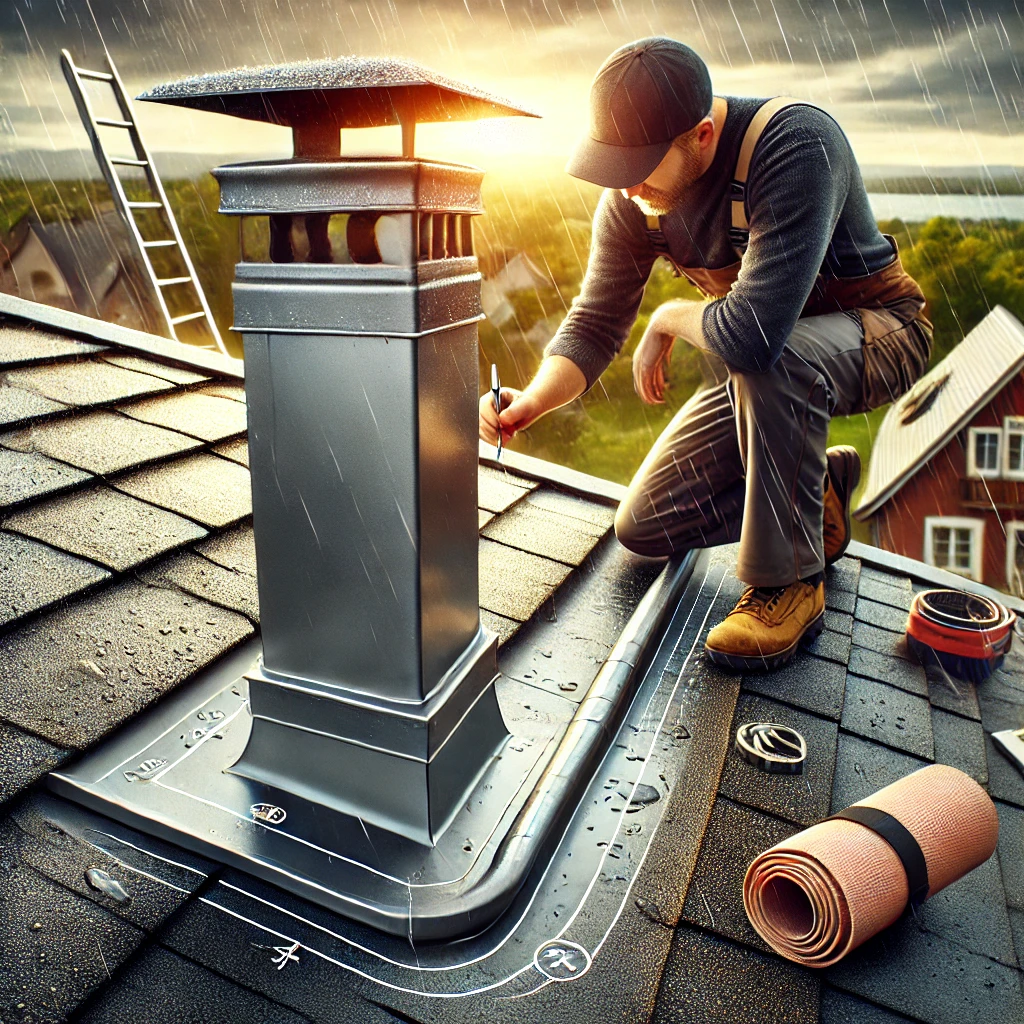
Tackling water intrusion from improper chimney cricket installation saves homeowners from chimney water damage. Simple steps ensure proper water management and keep chimneys dry. Let’s jump into the essentials!
Proper Installation Guidelines
Correct installation of a chimney cricket is key for water prevention. Here’s what to consider:
- Professional Help: Always hire a certified contractor. Avoid risky DIY attempts.
- Alignment: Align the cricket with the roof’s slope. This ensures rainwater flows away.
- Chimney Flashing: Securely install flashing around the cricket to seal gaps.
- Assess Roof Design: A cricket should fit the roof design to prevent leaks.
For tips from fire safety specialists on why hiring professionals is crucial, visit National Fire Protection Association.
Choosing Quality Materials
Materials add to a cricket’s effectiveness in water management. Invest wisely:
- Durable Metals: Use stainless steel or copper for longevity.
- Waterproofing Membranes: Incorporate underlayment for extra leak protection.
- Quality Wood: Opt for treated wood that resists rot.
- Comprehensive Warranty: Select materials offering a solid manufacturer’s warranty.
Visit Chimney Safety Institute of America for detailed material insights.
Regular Maintenance Tips
Routine maintenance combats cricket failure and improper drainage:
- Inspect Annually: Schedule yearly chimney inspections to catch issues early.
- Clear Debris: Remove leaves and twigs to prevent water buildup.
- Check for Rust: Look for rust or cracked materials indicating wear.
- Monitor Indoor Signs: Be alert for signs like peeling paint or ceiling stains.
Repair Solutions
Addressing water intrusion from faulty chimney cricket installation? We’ve got you covered! Let’s jump into effective solutions to keep your home dry and cozy.
- Chimney Inspection: Examine all areas for water damage and cricket failure. A thorough inspection identifies leaks or improper drainage issues. Chimney Safety Institute of America gives great tips on chimney health.
- Chimney Repairs: Focus on chimney flashing and roofing materials. Use quality materials for repair to prevent future damage.
- Professional Installation: Certified contractors ensure proper roof design alignment and secure chimney flashing. Avoid those DIY nightmares—trust us, you don’t want to deal with that chaos.
- Enhanced Drainage Systems: Install an effective drainage system to handle water flow efficiently. This prevents improper drainage, keeping your chimney area dry.
- Regular Maintenance: Schedule annual inspections and follow maintenance tips to prevent further roof leaks or chimney water damage.
Want expert advice? Reach out to professionals for consultation. For more info on weather-specific tips, check out the National Weather Service.
Conclusion
Water intrusion from improper chimney cricket installation is a serious issue that demands our attention. By understanding the importance of chimney crickets and the risks associated with faulty installations, we can take proactive steps to protect our homes. Regular inspections and maintenance are key to preventing costly water damage and ensuring our homes remain dry and secure.
Let’s prioritize professional installation and choose high-quality materials to withstand harsh weather conditions. Staying vigilant and addressing any signs of water intrusion promptly will save us from future headaches. For those in challenging climates, consulting with experts can provide peace of mind. Remember, a well-maintained chimney system is our best defense against water intrusion.
Frequently Asked Questions
What is a chimney cricket and why is it important?
A chimney cricket is a small roof-like structure located behind a chimney that channels water away to prevent leaks and water damage. It’s important because it protects the home from water intrusion, especially during severe weather, by directing water off the roof and away from the chimney.
What are the signs of improper chimney cricket installation?
Signs of improper installation include cracked bricks around the chimney, rust stains, moss growth, and dampness. Indoors, look for peeling paint, warped wood, and ceiling stains, which can indicate potential water intrusion due to faulty chimney cricket installation.
Why is professional installation of a chimney cricket recommended?
Professional installation is recommended to ensure the chimney cricket is aligned properly with the roof’s slope and securely flashed. Certified contractors use quality materials, which are vital for durability and effectiveness in preventing water intrusion, particularly in areas with challenging weather.
How can homeowners prevent water intrusion in their chimneys?
To prevent water intrusion, homeowners should hire certified contractors for proper chimney cricket installation, use high-quality materials like durable metals and waterproofing membranes, and conduct regular maintenance, including annual inspections and clearing debris from the roof.
What should homeowners do if they suspect water intrusion from a chimney?
If homeowners suspect water intrusion, they should contact a professional for a thorough inspection to identify leaks and drainage issues. Prompt professional repair and ensuring the use of quality materials can address water intrusion and prevent further damage. Regular maintenance is key to avoiding recurrence.
Are there different types of chimney crickets, and which is best?
Yes, there are different types of chimney crickets, including wood, metal, and prefabricated options. The best type depends on the specific roof configuration and material compatibility. Consulting with a professional can help determine the most suitable type for effective water management.
How often should chimney systems be inspected and maintained?
Chimney systems should be inspected at least once a year to check for damage and clear debris. Regular inspections help catch potential issues early, ensuring the chimney cricket and roof remain in good condition to prevent costly water damage from occurring.
